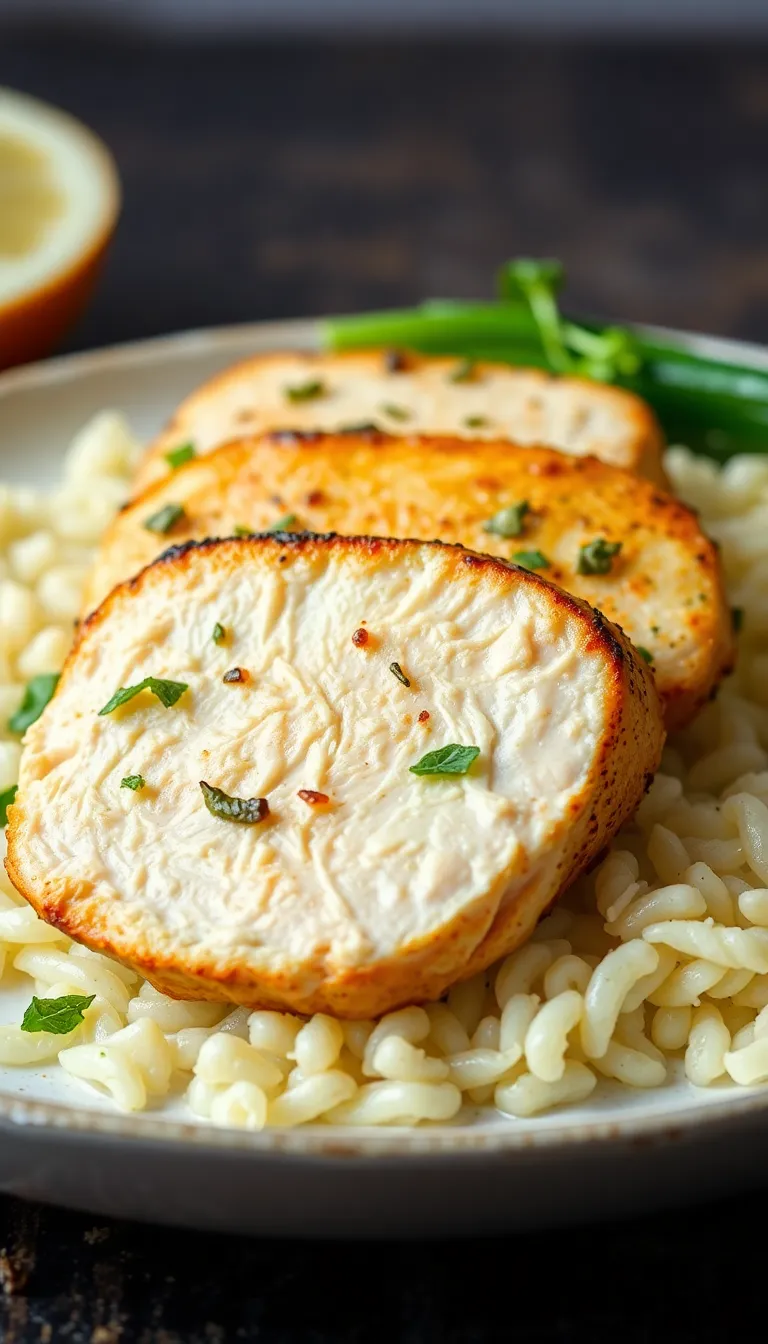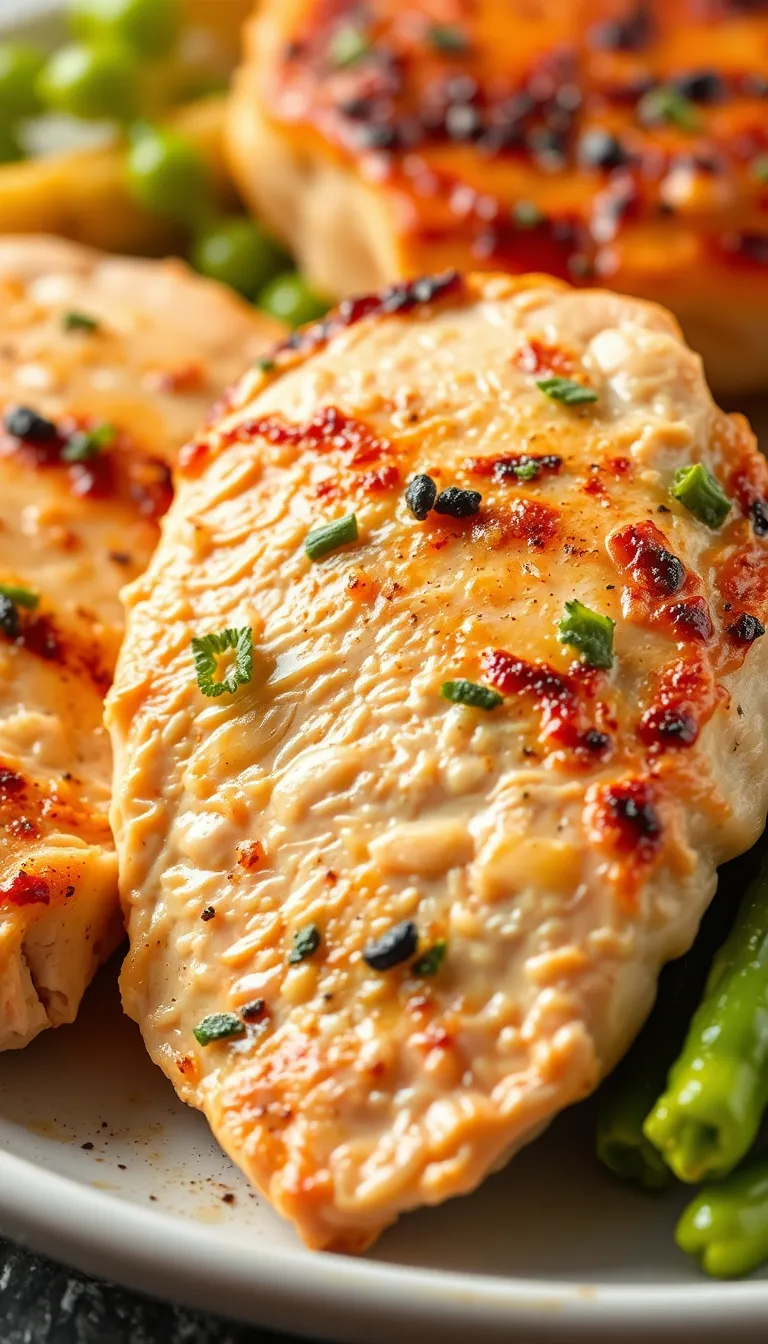Chicken breast. The most versatile, yet tragically misunderstood protein on the planet. Some people turn it into dry, flavorless cardboard.
Others drown it in sauce to hide their crimes. But you? You’re here to do better.
Whether you’re meal-prepping like a boss or impressing your significant other (or just your cat), this guide will turn you into a chicken breast wizard. No magic required—just a skillet, a few ingredients, and the willingness to stop overcooking everything.
Why This Recipe Works

This isn’t just another bland chicken recipe. The secret? Brining or dry-brining the chicken keeps it juicy, while a killer spice blend or marinade adds flavor without the guilt.
Plus, we’re using a two-step cooking method—sear first, finish gently—to avoid the dreaded rubbery texture. Even your picky eater won’t complain.
Ingredients You’ll Need
- 2 boneless, skinless chicken breasts (because bones are for soup)
- 1 tbsp olive oil (or butter, if you’re feeling fancy)
- 1 tsp salt (don’t skimp—this is flavor we’re talking about)
- 1/2 tsp black pepper (freshly ground, unless you enjoy disappointment)
- 1 tsp garlic powder (or fresh garlic if you’re extra)
- 1 tsp paprika (smoked or sweet, your call)
- 1/2 tsp dried thyme (optional, but highly recommended)
- 1/4 cup chicken broth or water (for deglazing the pan like a pro)
Step-by-Step Instructions

- Prep the chicken: Pound the thicker end of the breasts to an even thickness (about 1/2 inch). This ensures they cook evenly instead of turning into a dry mess.
- Season: Rub the chicken with salt, pepper, garlic powder, paprika, and thyme.
Let it sit for 10 minutes (or up to 24 hours in the fridge for maximum flavor).
- Heat the pan: Warm the olive oil in a skillet over medium-high heat. Wait until it shimmers—patience is key here.
- Sear: Cook the chicken for 4–5 minutes per side until golden brown. Don’t poke it constantly.
Let it develop a crust like it deserves.
- Finish cooking: Reduce heat to medium, add broth or water, cover, and cook for another 5–7 minutes until the internal temp hits 165°F (use a thermometer, not guesswork).
- Rest: Let it sit for 5 minutes before slicing. Yes, this matters. No, you can’t skip it.
How to Store Leftovers
Store cooked chicken in an airtight container in the fridge for up to 4 days.
For longer storage, freeze it for up to 3 months. Reheat gently in a skillet with a splash of water or broth to prevent dryness. Pro tip: Slice it before storing for easy salads, wraps, or quick stir-fries.
Why This Recipe Is a Game-Changer

Chicken breast gets a bad rap for being boring, but this method fixes that.
It’s high-protein, low-carb, and endlessly customizable. Plus, it’s cheaper than takeout and faster than waiting for your oven to preheat. Win-win.
You can swap spices, add a glaze, or throw it on a salad—no creativity required.
Common Mistakes to Avoid
- Overcooking: Chicken breast goes from juicy to jerky in seconds. Use a thermometer.
- Underseasoning: Salt is your friend. So are spices.
Don’t be shy.
- Skipping the rest: Cutting into hot chicken = all the juices on the plate, not in the meat.
- Crowding the pan: Steamed chicken is sad chicken. Give it space.
Alternatives for the Adventurous

Not feeling basic? Try these twists:
- Marinated: Swap dry spices for a mix of lemon juice, olive oil, and herbs.
- Baked: Skip the skillet and roast at 375°F for 20–25 minutes.
- Grilled: Char it over high heat for smoky flavor (just watch for flare-ups).
- Air-fried: Cook at 375°F for 12–15 minutes, flipping halfway.
Crispy without the oil.
FAQs
Can I use frozen chicken breasts?
Yes, but thaw them first. Cooking frozen chicken leads to uneven results (and possibly salmonella roulette).
Why is my chicken still pink inside?
Pink doesn’t always mean undercooked—some meats stay pink due to myoglobin. Use a thermometer to be sure.
Can I meal-prep this?
Absolutely.
Cook a batch on Sunday, and you’ve got lunches for days. Just reheat gently to avoid dryness.
What sides go well with this?
Roasted veggies, quinoa, mashed potatoes, or a simple salad. IMO, anything goes—except more dry chicken.
Final Thoughts
Chicken breast doesn’t have to be the sad, dry entrée of your nightmares.
With the right technique, it’s juicy, flavorful, and stupidly easy. Whether you’re a kitchen newbie or a seasoned cook, this recipe is your ticket to better meals. Now go forth and cook something that doesn’t suck.